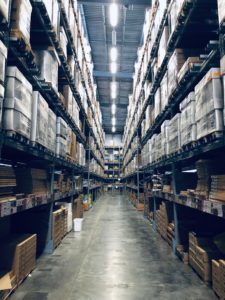Why is this solution important?
Engaging with suppliers to decarbonise their business, and therefore their products and services, provides a key opportunity to drive climate action at scale. Suppliers need to be aware of the strategic climate change priorities of contracting organisations in order to align and meet expectations. The more organisations inform suppliers that reducing the carbon impact of procurement is a top priority for them, the more suppliers will be willing to put in place ambitious decarbonisation plans in order to fulfil market expectations and to stay competitive
What is the solution?
Once the objectives for supplier engagement are defined, the first step for organisations is to communicate their climate ambition to suppliers. The content of the communication can range from simply informing suppliers about the organisation’s decarbonisation strategy and inviting them to support the goals, to asking them to fill in a baseline survey, to informing them about the roadmap for supplier decarbonisation developed by the organisation. All will depend on how is defined the role of supplier carbon reductions in the organisation’s climate strategy.
Different types of communication channels can be envisaged, the simplest being a supplier letter that states the organisation’s decarbonisation ambitions and what is expected from suppliers. Other potential channels are: a webinar, a supplier meeting with top suppliers, individual dialogues between buyers and suppliers, an online supplier platform. Organisations can also use an updated supplier code of conduct that contains supplier requirements on emission reductions as an occasion to communicate with suppliers.

Key actions
-
#1 Define the role of suppliers in the decarbonisation strategy
Before starting to communicate, define the role of suppliers in the strategy. Options range from simply informing them about the goals to making them an integral part of the decarbonisation journey. See the area factsheet on supplier engagement for further information.
-
#2 Communicate decarbonisation goals to suppliers
Start supplier engagement by communicating the ambitions to suppliers by letter, through an updated supplier code of conduct or through buyer-supplier discussions. Examples are provided in the tool section.
-
#3 Provide access to resources
Consider helping suppliers to get started on the journey and provide them with a list of resources (see below). If you want to go further, put in place supplier capability building measures to speed up the necessary transformation in the supply chain.
-
#4 Organise a supplier webinar or meeting
Advanced solution
For a more direct exchange with key suppliers, organise a webinar or a meeting. It will allow the organisation to explain the strategy and goals and enter a dialogue with suppliers.
-
#5 Establish a first baseline on where your top suppliers stand
Advanced solution
In order to inform next steps, consider establishing a baseline of top suppliers with regards to their decarbonisation strategy. See the example questionnaire from WWF below.
To consider
-
Potential co-benefits
- Building stronger supplier relations by engaging them in climate protection efforts
- Showcasing your organisation’s commitment
-
Success conditions
- Clarity about the role of suppliers in the organisation’s decarbonisation strategy to be able to clearly explain expectations towards suppliers
- Awareness from the procurement section on the organisations’ climate goals and the supplier engagement strategy, e.g. through training and/or early involvement in the development of the decarbonisation roadmap.
-
Prerequisites and specificities
- Capacity to reply to potential questions from suppliers
Tools and good practices
-
1.5°C Supplier Engagement Guide
An online tool that provides key actions for different steps of the procurement process. It provides templates, supplier letters and other examples of concrete actions of organisations
Read here -
General supplier letter template
A template to communicate an organisation’s climate strategy and the role suppliers are expected to play. The template can be tailored to the individual strategy of any organisation (9)
Read here -
Example questionnaire for suppliers, WWF
A sample questionnaire that walks organisations through typical questions they may want to consider asking their suppliers when engaging on climate ambitions
Read here -
Sample slides for supplier dialogue, Ericsson
A slide set from Ericsson from a seminar directed at suppliers of Ericsson that do not yet have a climate target to halve carbon emissions by 2030 (10)
Read here -
Value Change in the Value Chain: Best Practices in Scope 3 Greenhouse Gas Management, Science Based Targets Initiative, 2018
A straightforward supplier engagement framework is presented in chapter 5 that can be employed across sectors. Steps 3 and 5 cover communication and support
Read here
Resources for suppliers
-
1.5° Business Playbook
A playbook with key steps for any organisation that is committing to reducing emissions in line with science
Read here -
Resources from Science-Based Targets Initiative
Resources on setting climate targets, including e-learning modules
Explore here -
SME Climate Commitment
The SME Climate Commitment is one of the three pillars of the SME Climate Hub and provides SMEs - no matter their sector or geography - with the opportunity to make an internationally recognised climate commitment which is aligned with the latest climate science
Read here -
Climate Tool, Axfoundation
A free online course to help organisations get started on reducing carbon emissions. It focuses on the strategic process and a good overview on measuring emissions using the Greenhouse Gas Protocol
Explore here -
Climate Fit course, SME Climate Hub
A set of complementary online trainings specifically tailored to help SMEs determine how to take climate action and future-proof their businesses. It focuses on the presentation of concrete solutions
Explore here
Supplier engagement

Supplier incentives

Request carbon reductions at supplier level

How is the British NHS bringing suppliers on its net-zero journey?
Sources
(1) Carbon Disclosure Project, 2022, Engaging the Chain: Driving Speed and Scale. CDP Global Supply Chain Report 2021. Read here.
(2) Based on carbon footprints of Climate Action Accelerator partners.
(3) 1.5°C Supplier Engagement Guide. Read here.
(4) Ericsson, 2022, Ericsson Code of Conduct for Business Partners. Read here.
(5) Ericsson, Supplier climate letter. Read here.
(6) Ericsson, Supplier climate action seminar presentation. Read here.
(7) Ericsson, Supplier climate action & target setting. Read here.
(8) 1.5°C Supplier Engagement Guide. Read here.
(9) 1.5°C Supplier Engagement Guide. Read here.
(10) 1.5°C Supplier Engagement Guide. Read here.
Cover photo © Dylan Gillis/Unsplash.
